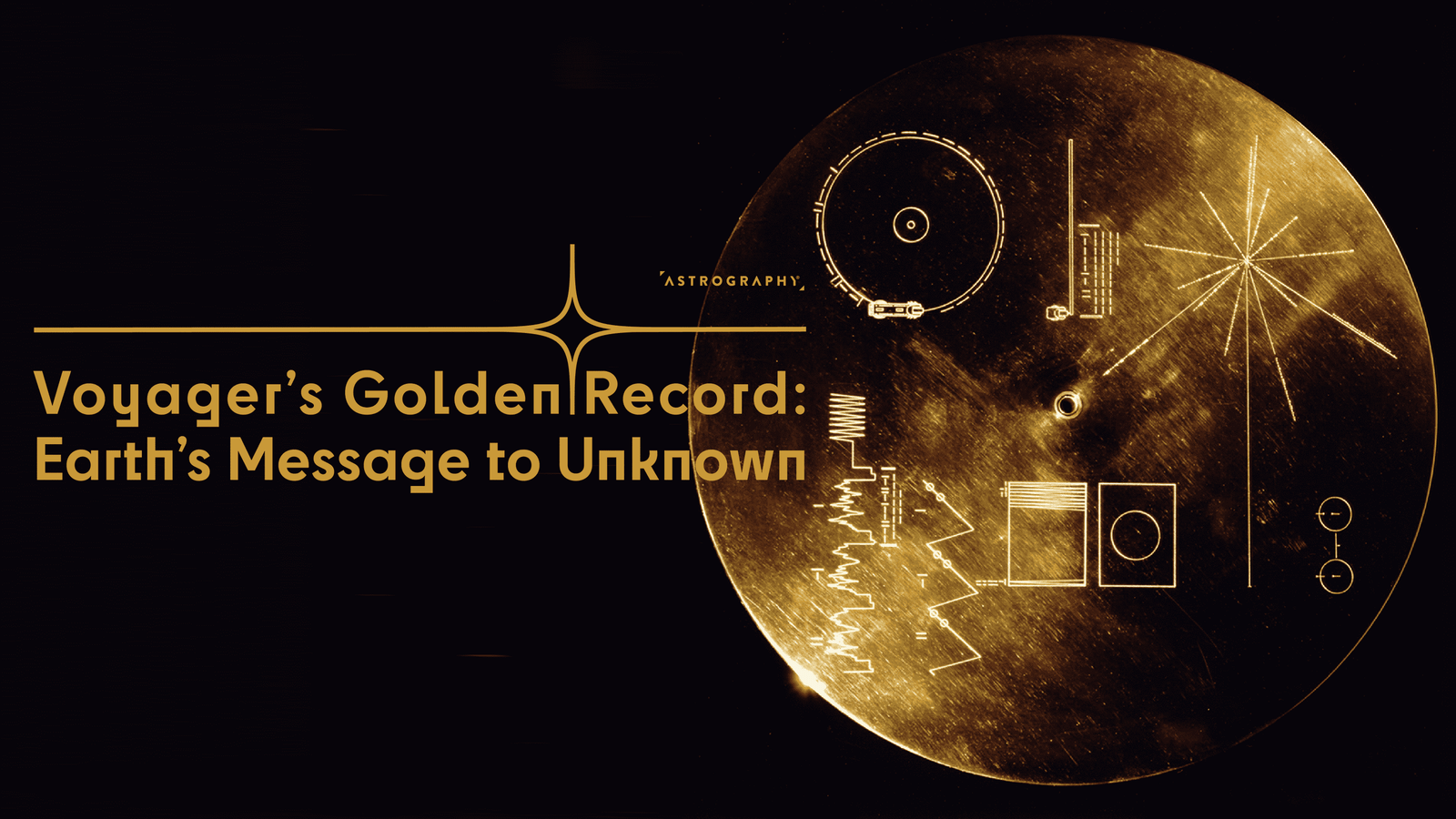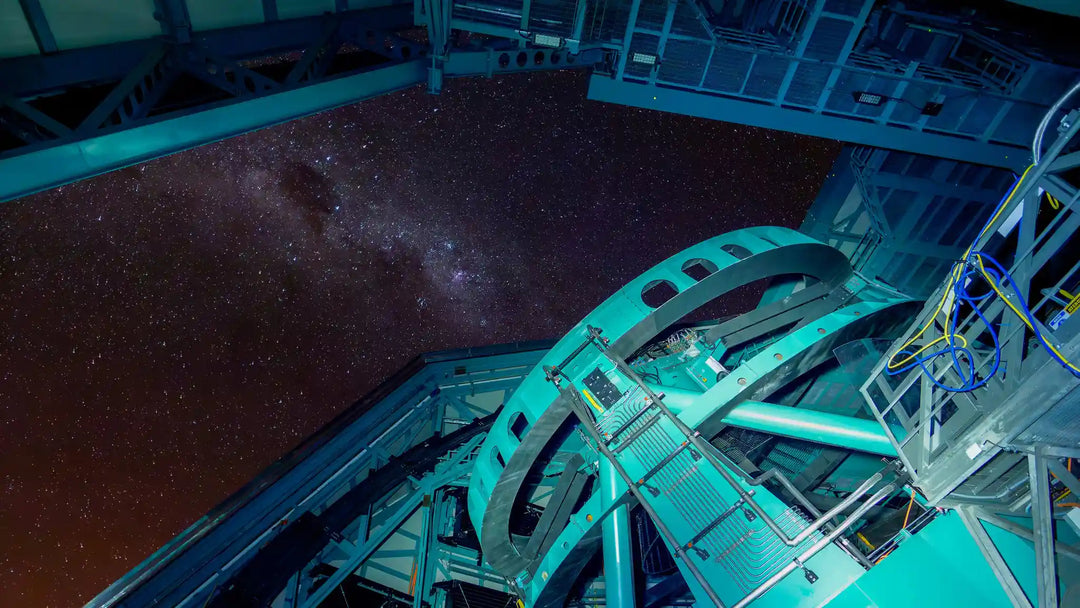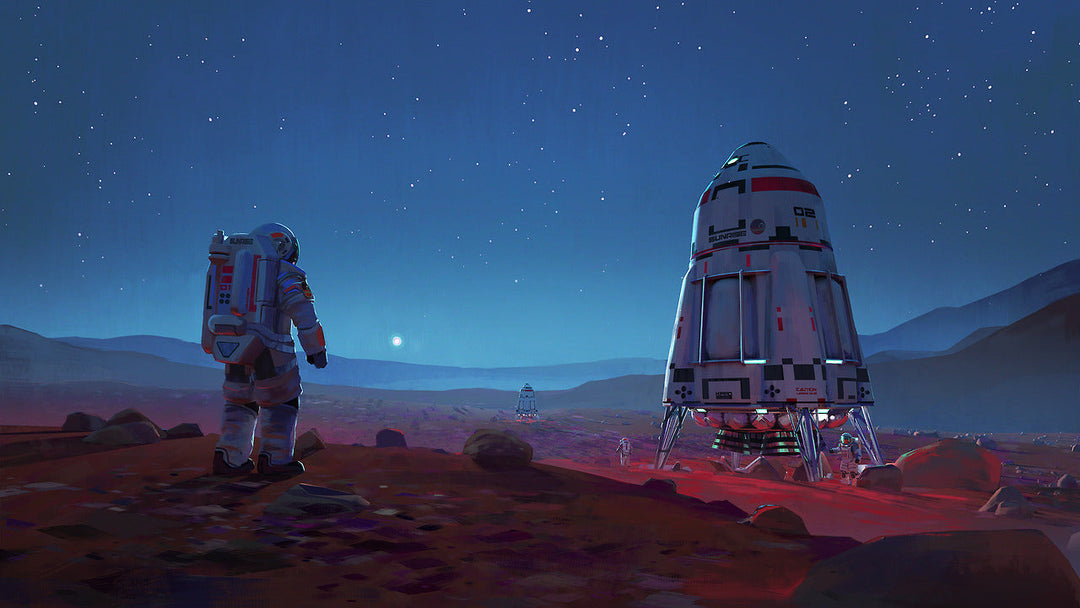The Voyager Golden Record: Humanity's Message to the Cosmos

In the summer of 1977, two spacecraft, Voyager 1 and Voyager 2, embarked on a journey that would take them beyond the known boundaries of our solar system. Each craft carried with it a unique artifact: the Voyager Golden Record, an ambitious attempt to communicate the essence of humanity to any intelligent life forms that might encounter it in the vastness of space. This extraordinary endeavor was not merely a scientific mission; it was a profound act of storytelling, encapsulating the hopes, dreams, and cultural heritage of Earth.
What is Voyager Golden Record?
The Voyager Golden Record is a phonograph record that was launched into space in 1977 aboard the Voyager 1 and Voyager 2 spacecraft. It serves as a time capsule, intended to communicate the story of our world and its inhabitants to any intelligent extraterrestrial life that may encounter it in the future. The record contains a variety of sounds, music, and images that represent the diversity of life and culture on Earth.
What is on the Voyager Golden Record?
The Golden Record is a rich tapestry of sounds, images, and music that reflects the diversity of life and culture on Earth. It includes:
Music: A 90-minute compilation featuring 28 musical tracks from various cultures and eras, ranging from classical pieces by Beethoven and Mozart to traditional songs from around the world. Each selection was chosen not only for its artistic merit but also for its ability to evoke emotion and connection.
Greetings: Spoken greetings in 55 languages, including a message from then-President Jimmy Carter and U.N. Secretary-General Kurt Waldheim, expressing peace and goodwill.
Sounds of Earth: A collection of natural and human-made sounds, such as the songs of birds, the roar of the ocean, and the laughter of children, designed to convey the richness of our planet's auditory landscape.
Images: 115 photographs depicting life on Earth, including images of people, animals, and landscapes, encoded in analog form to provide a visual narrative of humanity's existence.
This carefully crafted compilation serves as a cosmic mixtape, inviting any potential extraterrestrial listeners to understand who we are and what we value.
Launch and Legacy
On August 20 and September 5, 1977, the Voyager spacecraft were launched, carrying the Golden Records into the cosmos. Since then, Voyager 1 and Voyager 2 have traveled beyond the outer planets, with Voyager 1 becoming the first human-made object to enter interstellar space in 2012, followed by Voyager 2 in 2018.

The Golden Record continues to serve as a beacon of hope and a testament to human ingenuity. While the likelihood of it being discovered by extraterrestrial life remains uncertain, its creation reflects our desire to reach out and connect with the universe. As it drifts through the cosmos, the Voyager Golden Record encapsulates the essence of humanity—a message of peace, curiosity, and the enduring quest for knowledge
The Creation and Manufacturing of the Voyager Golden Record
The Voyager Golden Record stands as a remarkable testament to human creativity and ambition. Launched in 1977 aboard the Voyager 1 and Voyager 2 spacecraft, it serves as a time capsule of Earth's culture, designed to communicate our existence to any extraterrestrial life that might encounter it. The story of its creation is as fascinating as the record itself, involving a collaboration of scientists, artists, and engineers, all united by a shared vision of connecting with the cosmos.
The Birth of an Idea
The concept of the Golden Record was born from the minds of some of the most brilliant thinkers of the time, including Carl Sagan, who envisioned this record as a time capsule of Earth’s civilization.
Sagan and his team meticulously curated the contents, aiming to present a representative snapshot of life on our planet. The record itself is a gold-plated copper disc, designed to last for billions of years, with instructions for playback encoded in symbolic language.
Vision and Conceptualization
Sagan's vision for the Golden Record was rooted in the desire to communicate the essence of humanity to any potential extraterrestrial life forms that might encounter it. He believed that the record should not only contain scientific information but also reflect the cultural and emotional depth of human existence.
This perspective was influenced by earlier missions, such as the Pioneer spacecraft, which had included simple plaques with basic information about humanity. Sagan sought to expand this concept into a more comprehensive representation of Earth and its inhabitants.
Sagan's vision was to create a record that would not only convey information about Earth but also evoke a sense of connection and curiosity. The committee tasked with this monumental challenge included notable figures such as Timothy Ferris, who played a crucial role in the selection of music and sounds for the record.
Curating the Content
To achieve this ambitious goal, Sagan assembled a diverse team of experts, including scientists, artists, and musicians. The selection process for the record's contents was meticulous and collaborative. Sagan emphasized the importance of including a variety of sounds, images, and music that would represent the diversity of life and culture on Earth.
Musical Selections: Sagan enlisted musicologists and collectors, such as Alan Lomax, to help curate a global musical selection. The final compilation included 27 tracks from various cultures and eras, showcasing the richness of human creativity.
Greetings and Sounds: Under Sagan's guidance, the record featured spoken greetings in 55 languages, as well as a collection of natural and human-made sounds, such as animal calls and laughter, to convey the auditory landscape of Earth.
Visual Representation: Sagan's team also included artists who worked on encoding 115 images that depicted life on Earth, including human beings, landscapes, and scientific diagrams. This visual narrative was designed to provide context and meaning to the sounds and music included on the record.
Voyager Golden Record: Manufacturing Process
The physical creation of the Golden Record involved several steps and collaborations with various organizations:
Material Selection: The record is made from gold-plated copper, chosen for its durability and ability to withstand the harsh conditions of space. Each disc measures 12 inches in diameter.
Production Partners: Blank records were provided by Pyral S.A., a French company, while CBS Records contracted the JVC Cutting Center in Boulder, Colorado, to cut the lacquer masters. These masters were then sent to the James G. Lee Record Processing Center in California for gold plating.
Gold Plating: The gold plating process took place on August 23, 1977. After plating, the records were mounted in aluminum containers designed to protect them during their journey through space.
Inscription: Each record features a hand-etched inscription that reads, "To the makers of music – all worlds, all times," symbolizing a universal message of connection through art.
Technical Innovations
Sagan's leadership was crucial in addressing the technical challenges of the project. The team decided to use a phonograph record as the medium for the Golden Record, which allowed for a more extensive range of audio content compared to earlier methods.
They designed the record to spin at 16 2/3 revolutions per minute, which increased its storage capacity to nearly 90 minutes of audio. This decision was a testament to Sagan's understanding of both the artistic and scientific aspects of the project.
The Significance of the Golden Record - A Message of Hope
Sagan's vision extended beyond mere representation; he sought to create a message of hope and connection. He famously stated that the launching of the Golden Record was a way to express something hopeful about life on Earth, emphasizing the importance of our shared humanity. Through the record, Sagan aimed to convey a sense of unity and a desire for peace, encapsulating the essence of human existence in a cosmic context.
Carl Sagan's contributions to the creation of the Voyager Golden Record were foundational. His vision, leadership, and collaborative spirit not only shaped the contents of the record but also transformed it into a lasting symbol of humanity's aspirations and our quest for connection with the universe.
The Golden Record remains a powerful reminder of our place in the cosmos and the enduring hope that we share as a species.
Voyager Golden Record: Conclusion
The Golden Record is more than just a collection of sounds and images; it is a message of hope and a testament to our desire for connection. As Voyager 1 and 2 journeys through the cosmos, they carry with them the dreams of a species reaching out into the unknown, embodying the Latin phrase per aspera ad astra—through the struggle to the stars. This phrase encapsulates the essence of human perseverance and the quest for knowledge and understanding.
The Voyager Golden Record stands as a monumental achievement in human history, blending science, art, and philosophy into a single artifact. It invites us to reflect on our shared humanity and the cultural narratives that define us. As we look to the future, the Golden Record serves as a reminder of our responsibility to preserve our planet and to strive for a deeper understanding of ourselves and the cosmos.
In a world where communication is often fragmented, the Golden Record represents a unified voice, echoing through the vast emptiness of space. It challenges us to consider what it means to be human and what legacy we wish to leave behind. As we continue to explore the stars, the Voyager Golden Record remains a beacon of hope, a testament to our desire for connection, and a reminder of the beauty and complexity of life on Earth.
FAQ: You Ask, We Answer
What is on the Voyager Golden Record?
The Voyager Golden Record includes:
Natural sounds: Such as thunder, birds, and human-made sounds.
Music: A diverse selection of 28 tracks from various cultures and eras, including classical music and traditional songs.
Spoken greetings: Messages in 55 different languages.
Images: A total of 115 analog-encoded photographs depicting life on Earth and various scientific concepts.
How was the Voyager Golden Record created?
The creation of the Voyager Golden Record was spearheaded by a committee led by astronomer Carl Sagan. The selection process involved curating a collection of sounds, music, and images that would effectively portray Earth’s diversity. The record was designed to be playable for up to a billion years, featuring audio recorded at 16 ⅔ RPM to maximize the amount of content included.
What songs are on the Voyager Golden Record?
The record features a wide range of musical selections, including:
Classical pieces: Works by composers like Bach, Beethoven, and Mozart.
Popular music: Including Chuck Berry's "Johnny B. Goode."
Traditional music: From various cultures, such as a panpipe recording from the Solomon Islands
Can you buy a copy of the Voyager Golden Record?
While the original Voyager Golden Records are not available for purchase, there have been reissues. Ozma Records released a box set that includes a version of the Golden Record pressed on yellow vinyl, along with a book detailing its history and production. This reissue is not identical to the original but captures its essence and is available for collectors and enthusiasts.
Can you listen to the Voyager Golden Record?
Yes, you can listen to the contents of the Voyager Golden Record. The audio has been made available online through various platforms, and playlists featuring the music included on the record can be found on streaming services like Spotify.
How to decode Voyager Golden Record?
Decoding the Voyager Golden Record involves understanding the instructions encoded on its cover, which include diagrams and explanations for playing the record. The record itself is designed to be played with a standard phonograph, and the sounds are encoded in an analog format. Check more.
How large were the Golden Records on the Voyager Missions?
The Voyager Golden Records are 12-inch (30 cm) phonograph records. They are made of gold-plated copper and were designed to withstand the harsh conditions of space travel.
How long will the Voyager Golden Record last?
The Voyager Golden Record is designed to last for up to a billion years in the vacuum of space, although the likelihood of it being discovered and played by an extraterrestrial civilization remains uncertain. The materials used in its construction aim to preserve its contents for as long as possible.
Resources
- Voyager Mission: Fact Sheet, NASA Science, [4.09.2024]
- Voyager Golden Record: Overview, NASA Science, [04.09.2024]
- Voyager Golden Record: Contents, NASA Science, [4.09.2024]
- The Making of the Voyager Golden Record - Gallery, NASA Science, [4.09.2024]
- Voyager Golden Record: Sound of Earth, NASA Soundcloud, [4.09.2024]
- Smithsonian Music, Voyager Golden Record: Through Struggle to the Stars, Music.si.edu, [4.09.2024]
- The Making of the Voyager Golden Record, BBC Science Focus, [4.09.2024]
- R. Berry, How to decode the images on the Voyager Golden Record, Boing Boing, [4.09.2024]
- T. Ferris, How the Voyager Golden Record Was Made, The New Yorker, [4.09.2024]
- A. Horowitz-Ghazi, The Voyager Golden Record Finally Finds An Earthly Audience, NPR, 4.09.2024]
- J. Margolis, 40 years and counting: the team behind Voyager’s space odyssey, The Guardian, [4.09.2024]
- Voyager Golden Record: Encoded Images, Soundcloud, [4.09.2024]
















![Vera C. Rubin Observatory: Revolutionizing Astronomy Through the World's Most Advanced Telescope [All You Need To Know]](http://astrography.com/cdn/shop/articles/vera-c.-rubin-observatory_main.webp?v=1751627507&width=1080)

Leave a comment